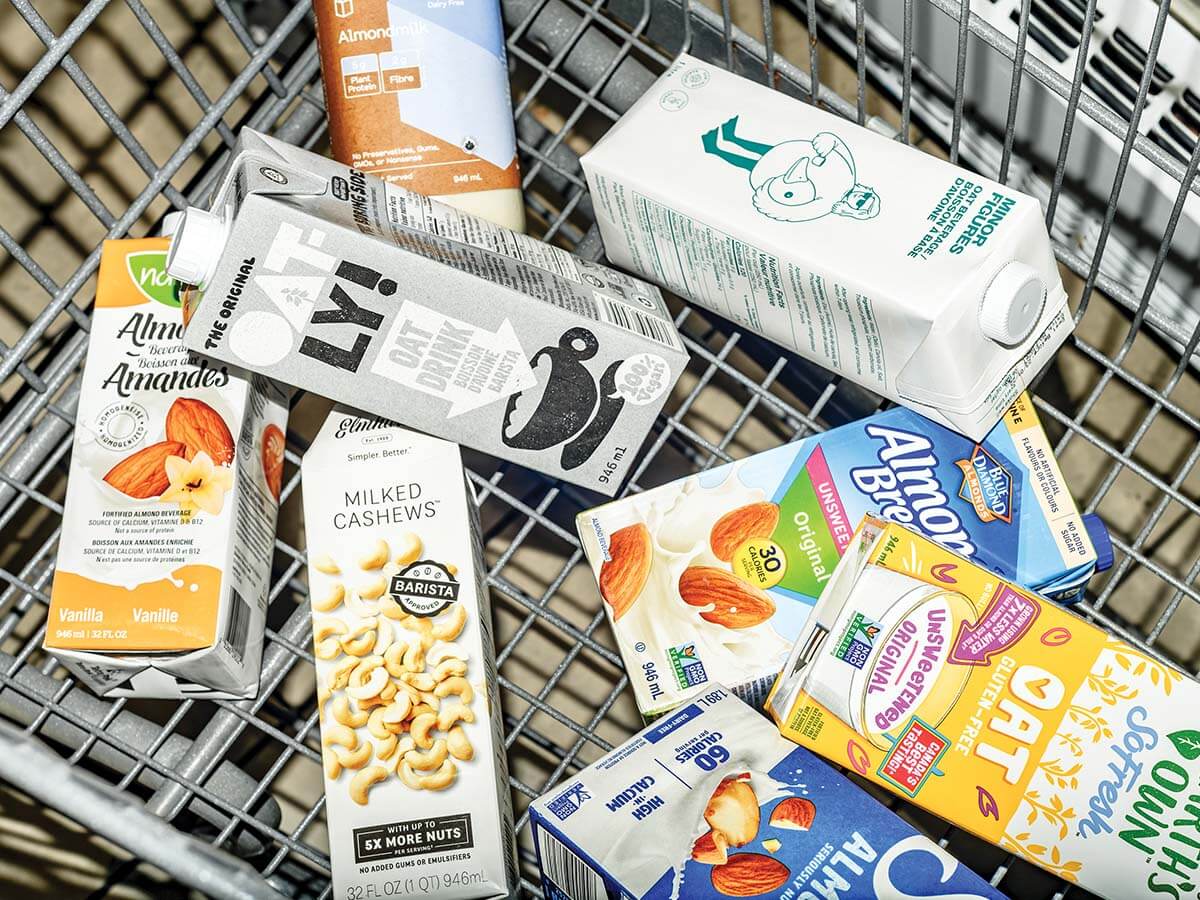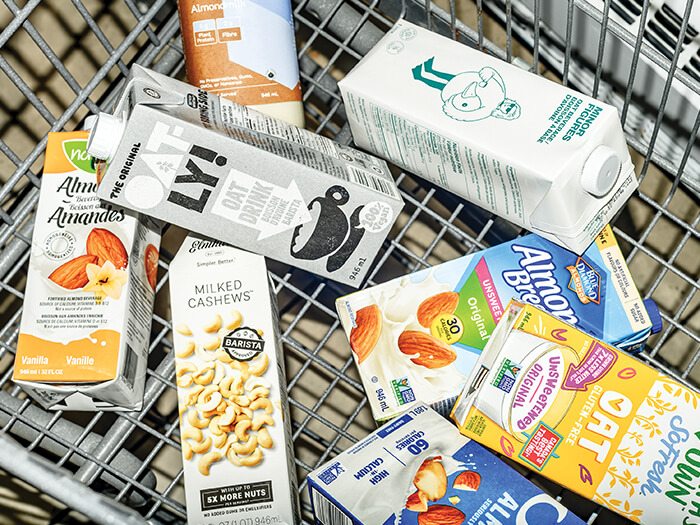
Is nut milk here to stay?
 Sales for non-dairy beverages have surged, in part due to customers trying to recreate their coffee shop favourites at home (Photo by Daniel Neuhaus)
Sales for non-dairy beverages have surged, in part due to customers trying to recreate their coffee shop favourites at home (Photo by Daniel Neuhaus)
In early 2021, Geneviève Bolduc, marketing director of Danone Canada’s plant-based food and beverages category, noticed a spike in sales. Demand for the oat-based version of Danone’s Silk brand of non-dairy drinks had jumped by a whopping 350 per cent. The trend was not a surprise and continued a boom in consumer interest in plant-based beverages accelerated by the pandemic, which Bolduc says has “showcased Canadians’ demand for access to healthy, locally sourced products.” She points to a newly introduced zero-sugar oat milk option that illustrates just how varied tastes in the category are becoming.
A decade or two ago, non-dairy milks were hard to find in grocery stores. They tended to be relegated to health food shops, nestled between the hemp cereals and crystal deodorants. At the same time, traditional dairy milk has been in a 20-year period of stagnating sales since 2000, according to Statistics Canada data. In contrast, non-dairy beverages are surging in popularity and taking up more shelf space at Loblaws, Sobeys and other retailers. “Non-dairy beverages were posting dollar sales growth of eight per cent at the end of 2019 compared to one per cent growth for dairy beverages,” says Leslie Ewing, executive director of Plant-Based Foods of Canada.
Some beverage sales have ticked up into the triple digits since the pandemic began. “The dairy alternative category, including beverages and yogurt-style products, is currently valued at $450 million in Canada,” Bolduc says. “This number is only set to grow.”
Part of what drove the COVID-19 bump was that “more people were drinking coffee at home,” says Alison Jackson, EY’s former West Coast consumer leader and currently a managing partner at the firm’s Calgary office. “So, people replicated the choice in milk options from their favourite cafés.”
But Jackson points out that there are other important, non-pandemic drivers for the demand: Approximately 16 per cent of Canadian adults are lactose-intolerant and nearly one-fifth of Canadians are now opting for some type of plant-based diet or limiting the amount of meat they consume.
On the business end, growing consumer interest isn’t the only appeal for non-dairy milk companies. According to a Forbes analysis, plant milks offer returns averaging six per cent higher than cattle dairy.
“The dairy industry in Canada is regulated,” says CPA Glenn Fraser, national leader of the food and beverage processing practice for MNP. “Prices are set and producers and processors need to operate within that framework. Non-dairy milk products still face the typical red tape encountered by any food and beverage company launched in Canada but don’t have those same restrictions. I don’t see why non-dairy milk products can’t become mainstream one day.”
Sylvain Charlebois, director of the Agri-food Analytics Lab at Dalhousie University in Halifax, also balks at the notion that non-dairy milks are a fad. “I’m not convinced it’s trend-driven,” he says. “Fundamentals do suggest consumers are looking for alternatives, and oats are particularly of interest since we grow the product in Canada.”
One of the benefits of non-dairy milk, however—the sheer variety of choice—is also one of its main challenges. In any given grocery store, there are oat, cashew, almond, soy, rice, coconut, sweetened, unsweetened, chocolate, vanilla and strawberry options. That adds complexity and possibly confusion for busy shoppers—not to mention the popularity of those options is always in flux. In 2020, an American company called Táche introduced pistachio milk that outsold its own projections by 300 per cent within the first six weeks. Meanwhile, oat may be the flavour du jour, but sales of rice milk are falling.
It can also be confounding to navigate the health messages telegraphed by each non-dairy brand. Brittany Hull, vice-president of marketing at Burnaby, B.C.-based Earth’s Own, a popular non-dairy milk maker, believes non-dairy milks will continue finding new customers, in part because of the environmental benefits. “Earth’s Own almond milk uses 16 times less land and four times less greenhouse gas emissions compared to cow’s milk,” she says.
There’s nothing to dispute those numbers—or the fact that, according to the Food and Agriculture Organization of the United Nations, cattle farming produces 62 per cent of all greenhouse gas emissions from livestock, which is more than pigs, poultry and all other animals combined. But critics of almond milk point to the high volume of water almond farming requires. A study by Oxford University suggests it requires 130 pints of H2O to produce a single glass of almond milk. Google “Is soy milk healthy?” and you’ll find mixed messages.
“It’s important to keep in mind that a lot of the consumer choice is driven by perception of benefits more than fully verified realities,” says EY Canada’s Jackson. She sees a lot of growth potential in non-dairy milks, though she ultimately thinks soy, oat and other options will remain a niche product. “Non-dairy milks still represent less than 20 per cent of traditional dairy sales,” she says. “It’s still not surprising to go into a grocery store and find they don’t have your particular brand of oat milk for sale. If you went into a large grocer and didn’t see dairy at all, that would probably make headlines.”
THINKING SUSTAINABLY
Read about the recycled paint company that is reducing waste and the biodegradable mattress that helps you sleep easy at night. Plus, find out how sustainability impacts business in this episode of Foresight: The CPA Podcast; and take advantage of these great sustainability resources for CPAs.